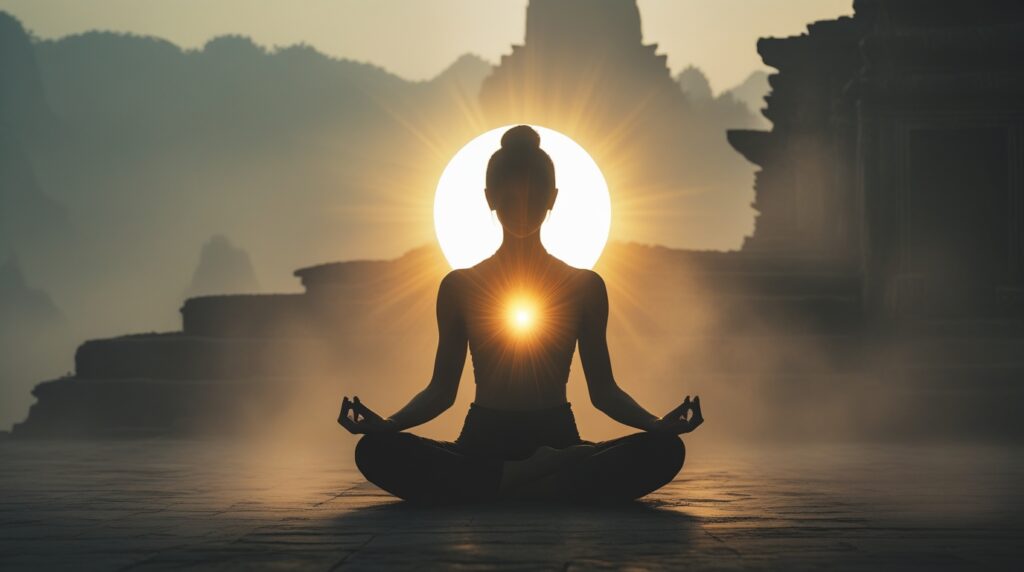This blog contains affiliate links. If you purchase through these links, I may earn a small commission at no extra cost to you. This helps support my work in sharing my recovery journey. Thank you for your support!
Breath of Life: My Journey with Yoga Pranayama

My journey into Yoga Pranayama began unexpectedly, sparked by my need to reclaim my health and build a positive routine. After rehab, my wife encouraged me to join a gym, hoping to keep me engaged during the evening hours when my cravings were strongest. To my surprise, I grew fond of weightlifting and, over time, began lifting heavier weights. Seeing my progress, my coach advised me to increase my food intake, as my body had become frail during my recovery. However, I soon realized that eating more wasn’t enough—I needed to improve my digestion to absorb the nutrients effectively. This realization led me back to Yoga, starting with three fundamental asanas: Bhujangasana (Cobra Pose), Uttanapadasana (Leg Raises Pose), and Naukasana (Boat Pose), all of which aid digestion.
Initially, I could barely hold these postures for thirty seconds. My body resisted, my muscles trembled, and frustration crept in. But with consistent practice, I gradually improved. My appetite stabilized, my digestion strengthened, and my motivation soared. It wasn’t long before I wanted to expand my Yoga practice. I recalled the calming and energizing effects of Yoga Pranayama from my school days, and instinctively, I knew it was time to incorporate breathwork into my routine. Yoga Pranayama, I realized, could deepen my practice and elevate my journey towards holistic well-being.
As I began incorporating Yoga into my routine, I realized that my initial poses were far from perfect, but just like my Yoga journey, Pranayama was another step towards self-improvement. I had already embraced imperfection in my asana practice, as I shared in this blog post on Yoga for recovery, so I knew I had to start small with Pranayama too.
Understanding Yoga Pranayama
Yoga Pranayama stands as a vital element of Yoga, cherished for its power to align mind, body, and soul. The term comes from Sanskrit roots—Prana meaning “life energy” and Ayama meaning “expansion” or “mastery”—describing the deliberate control of breath to enhance vitality. Though a single blog post can’t fully explore its richness, Pranayama involves purposeful breathing methods crafted to promote equilibrium, mindfulness, and a deep sense of tranquility.
In ancient Vedic traditions, Yoga was not limited to physical postures (Asanas); it was a holistic practice integrating Pranayama (breath control) and Dhyana (meditation). Each of these elements plays a crucial role in achieving overall well-being. The rhythmic breathing techniques of Yoga Pranayama enhance lung capacity, improve circulation, and regulate the autonomic nervous system, reducing stress and fostering mental stability. By mastering the breath, we unlock a profound tool for transformation—physically, mentally, and spiritually.
Breathwork is not just about physical well-being—it extends into the spiritual realm. I have always found deep solace in prayer, which I discussed in this blog on the power of prayer, and Pranayama amplified that sense of inner peace.
Three Pranayama Techniques That Shape My Day
I currently focus on three significant Pranayama techniques, each offering unique benefits to my body and mind. Below, I share my personal experiences with Nadi Shodhana Pranayama, Bhastrika Pranayama, and Kapalbhati Pranayama.
Nadi Shodhana Pranayama (Alternate Nostril Breathing)
Nadi Shodhana Pranayama, often called “alternate nostril breathing,” is widely regarded as a core Pranayama practice. As a child, I used to do it in Siddhasana (Accomplished Pose) or Padmasana (Lotus Pose). When I picked it up again years later, holding those positions felt difficult, so I switched to Vajrasana (Thunderbolt Pose) at first. After months of steady effort, I’ve now eased back into Siddhasana with comfort.
I once found it tough to sit in Siddhasana for extended periods during Pranayama. If you face the same challenge, try a comfy meditation cushion—it can transform your experience by supporting proper posture with ease.

To practice, I close my right nostril with my thumb and inhale deeply through my left nostril. I then close my left nostril with my ring finger and exhale through my right nostril. Next, I inhale through my right nostril, close it, and exhale through my left nostril, completing one cycle. I practice this for 4-5 minutes, ensuring I always start and end with my left nostril—a crucial detail in this practice. Over time, Nadi Shodhana has instilled a profound sense of calm and focus in me.
Bhastrika Pranayama (Bellows Breath)
Bhastrika Pranayama, or “Bellows Breath,” is a vigorous breathing technique that increases oxygen intake and energizes the body. I perform this practice in Siddhasana, with my fingers in Gyan Mudra (touching the thumb and index finger). I take forceful, rhythmic breaths in and out through both nostrils for 2-3 minutes. This technique floods my body with energy, cleanses my respiratory system, and leaves me feeling revitalized.
Kapalbhati Pranayama (Skull Shining Breath)
Kapalbhati Pranayama focuses on forceful exhalation and passive inhalation, emphasizing abdominal contractions. I practice it in Vajrasana, taking a few deep breaths before beginning the rapid exhalations. I count my breaths—though traditional instructions don’t require this—as it helps me stay focused. Practicing this for 2-3 minutes sharpens my mind, detoxifies my respiratory system, and strengthens my core muscles.
Role of Yoga Pranayama in My Recovery
Once I grew comfortable with Yoga Asanas, I felt drawn to deepen my practice by focusing on my breath through Pranayama. At first, the shift wasn’t easy—I found my mind wandering, and restlessness often took over. But with persistence, everything changed. Over time, Yoga Pranayama became my refuge, offering mental clarity during uncertain moments and inner strength during emotional struggles.

During my darkest days after rehab, I felt consumed by anxiety, debt, and self-doubt. My confidence was shattered, and the mental burden of rebuilding my life seemed impossible. While gym workouts and Yoga Asanas helped me regain physical strength, Yoga Pranayama brought tranquility to my mind. It enabled me to approach challenges with a clearer perspective and significantly reduced my cravings. I could sit among friends who drank alcohol and feel completely detached from the urge—a transformation I hadn’t anticipated.
Yoga Pranayama became a crucial part of my healing journey, complementing my gym workouts and prayer. I had already experienced the transformative effects of a holistic approach to well-being, which I discussed in detail in this blog on holistic practices, and Pranayama further deepened that connection.
Even You Can Start
Yoga Pranayama is a timeless gift from our ancestors, perfected through years of dedicated practice. Mastery doesn’t come overnight, and striving for perfection too soon can lead to procrastination. I liken learning Pranayama to learning to drive—patience and persistence are key. Our bodies are the most advanced instruments we own, and Pranayama fine-tunes them, enhancing every aspect of our well-being.
I didn’t master Pranayama overnight, but I learned that showing up daily was the key. Even when my mind resisted, I kept going, relying on the same principles I shared in my blog about the power of consistency.
All you need to begin is a Yoga mat and a peaceful morning routine. If you don’t have a mat yet, investing in a high-quality Yoga mat can make your practice more comfortable and enjoyable. The practice takes less than ten minutes, yet its benefits are immeasurable. I encourage you to start small—perhaps with Anuloma Viloma (Alternate Nostril Breathing) or Deep Belly Breathing—and build from there. You’ll soon witness visible improvements in your physical and mental health, motivating you to explore deeper.
Before starting, however, it’s essential to consider your health. If you have heart disease, high blood pressure, or are pregnant, consult a doctor first. Practicing in a well-ventilated, comfortable space also enhances the experience, ensuring it remains beneficial rather than strenuous.
Yoga Pranayama: A Journey of Breath and Transformation
In today’s fast-paced world, the power of breathwork is accessible to anyone willing to embrace it. For me, Yoga Pranayama has been a lifeline, a steady force guiding me toward stability, clarity, and strength. From a man who once lost himself in addiction to someone who now values mindfulness and inner peace, my journey is proof that change is possible.
I invite you to embark on your own journey. Yoga Pranayama isn’t just a practice—it’s a path to a more balanced, harmonious, and resilient life. Let’s take this step together, one breath at a time.